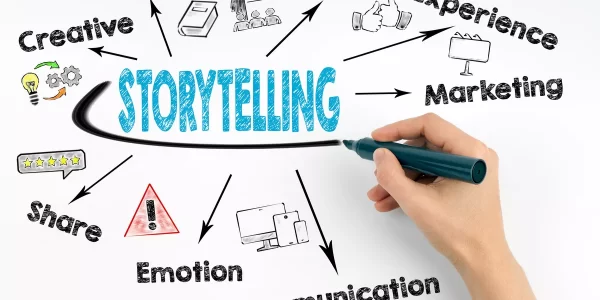Humans have been telling and retelling stories for eons. Stories are a big part of our lives. They can draw us in, make an emotional connection with us, motivate us, and stay in our memories. But they hold such strength that we are able to personalize them and draw from our subjective experiences of them.
If such an element is added to our learning process, what happens? We can connect with our newly gained knowledge, hold it in our memory, and share it with others. To achieve this in training, corporations must use storytelling elements in their eLearning courses.
You can also employ an employee engagement platform or an interactive tool to aid your efforts of making interesting training content with the use of storytelling.
But the catch is that employing a storytelling technique to cover your course material can take time and effort. In this article, we present a few tips and techniques to effectively use storytelling in your eLearning course that educates and entertains learners.
#1 Use A Structure
Make sure your story has a strong foundation and an organized structure. If your story is haywire, learners will need time to gather and process pieces of information. That will take away attention from what you want them to learn. Stories partly stick in our minds because of their strong, logical structure.
There is one common structure in all stories. It includes a starting, an action or conflict where the problem is introduced, a climax, and a closure or resolution of the issue.
Apart from this structure, your story can have its own elements.
#2 Use Subtle And Meaningful Interactions
When utilized sparingly and carefully, interactions can often be more effective than clicks and drags. You can add a few thought-provoking or contemplative questions. You can also ask learners what they would have done in the same situation as the protagonist.
These questions won’t drive the flow of the story but turn it into a narrative and add meaning for the learners. You can replay these questions at the end of the story because the idea is to reflect and invoke thoughts in the learner.
#3 Make The Storyline Relatable
Every single character in your story needs to be relatable to your audience. Make sure the language is easy to understand and the characters are in the context of the audience. Remember that the characters in your story are the means to attain your main learning goals. So you may represent a specific trait in your character, say, the lack of the skill the course aims to teach.
While you may always add some humor or lighthearted banter between characters to make your story more genuine, it’s always advisable to keep on track and stay consistent with the subject.
#4 Reach The Learners’ Emotions
Emotional appeal is a key component of storytelling, and story components like character, conflict, and plot influence emotions. Engaging learners emotionally moves them closer to accepting the value of the learning materials and changing their behavior to pursue the course’s objective.
These tales have the power to engage learners emotionally. For instance, if your story illustrates the effects of disregarding workplace safety regulations for compliance learning, you can show how not donning the advised safety kit, the main character suffers severe injuries. The result of this story is likely to bring the desired behavior change in the learners, i.e., always wearing the safety kit in the workplace.
#5 Use High-Quality Images To Demonstrate The Plot
Obtain high-quality photographs to depict the story’s main themes visually and depict ideas that the course intends to teach. You can use royalty-free images or custom-make them.
Try to consider how to keep the learners’ attention through these images. For example, instead of merely a picture of two people, you might utilize more symbolic and motivational ideas to depict crucial plot points in a story about two characters collaborating to accomplish a particular goal.
Conclusion
Storytelling is undoubtedly a tested and effective way of conveying your message to an audience. Just keep these few pointers in find, and you will have utilized this feature in your eLearning course to a good potential.




